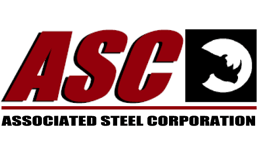If memory serves, I did a post on Lean Duplex some time ago. It is an important grade of stainless and worth a revisit.
Basically, Lean Duplex is a leaner chemistry derivative of Duplex Stainless Steel. Duplex Stainless Steel is recognized as having a unique shared grain structure; Austenite and Ferrite. Each of those grain types contributes to the characteristics and performance of the steel grade. The grade was developed to provide resistance to Stress Corrosion Cracking (SCC), a type of corrosive failure prevalent in SOUR SERVICE applications in operations such as Refineries and Pulp & Paper plants. Sour Service applications involve acidic or base (alkaline) exposure. 2205 Duplex is probably the most common grade of Duplex that the industry is familiar with; although there are several others. I refer to 2205 as the “Original Grade”.
The short and sweet history of steel usage to combat SCC in sour service maintenance applications is this: 304 and 316 (Austenitic grain) worked tolerably well, but lacked strength. 410 and 416 (Martensitic Grain) provided the needed strength, but offered less general corrosion resistance. Turns out the catalyst was nickel content, but that’s another topic. The thought was, develop a grade that was half Austenite and half Martensite (Duplex), and enjoy the best of both worlds. The development of the original chemistry 2205 Duplex did just that. It fit the bill, but it was expensive and somewhat user unfriendly.
Years later, when the cost of elements used in the chemistry of the Duplex grades became prohibitive, those grades were pruned to the bone (reduced the expensive elements) to develop a new “More Economical” grade, Lean Duplex. Engineers were content to live with a much less effective product, in order to come up with a more affordable product. Nickel prices alone, had seen a ghastly increase at that time. The new LEAN DUPLEX, however, displayed an unexpected phenomenon; resistance to general corrosion and SCC was very near that of the original grade. Strength was also maintained; and, machinability was increased dramatically.
Today, LDX is most commonly used globally in tube and sheet form in construction of container vessels and conveyance items.
Lean Duplex (LDX)
Resists pitting and crevice corrosion similar to 316L
Resists Intergranular attack better than 304L or 316L
Resists Stress Corrosion Cracking better than 304L, 316L, 410, 416
Resists General Corrosion better than 304L, and 316L
Weldability – less restrictive than 2205
-Howard Thomas, July 6th 2021
